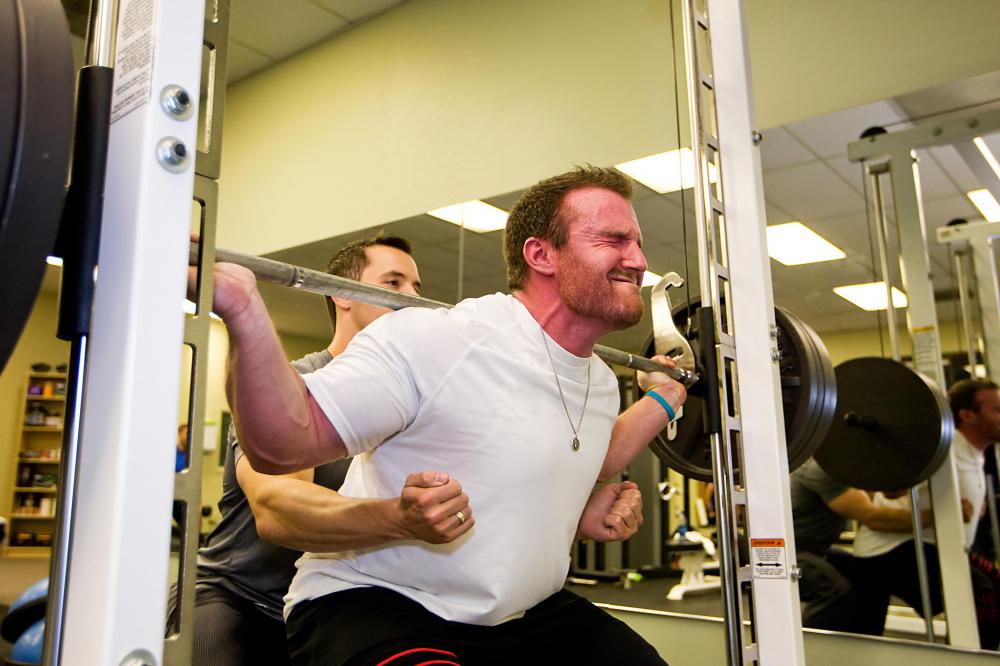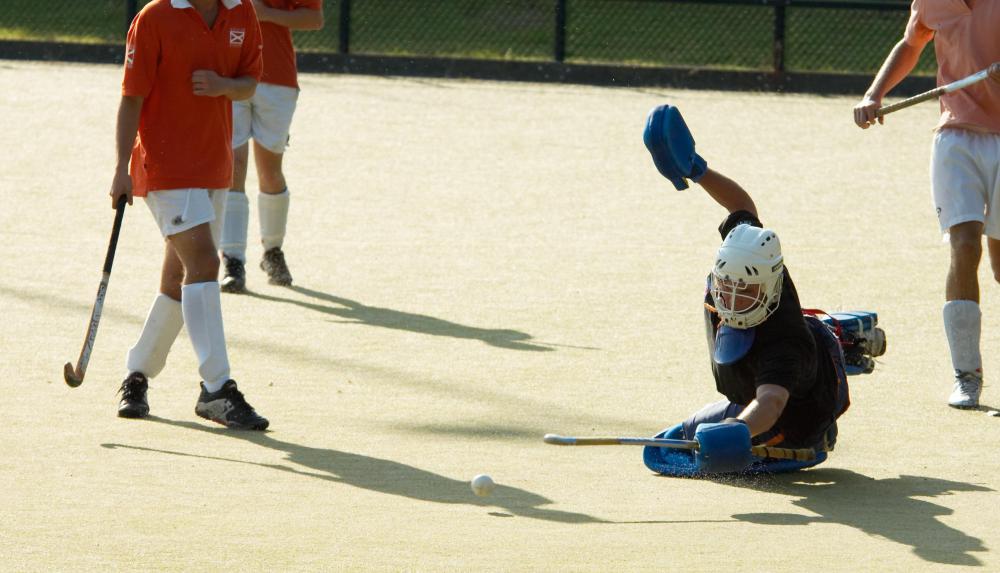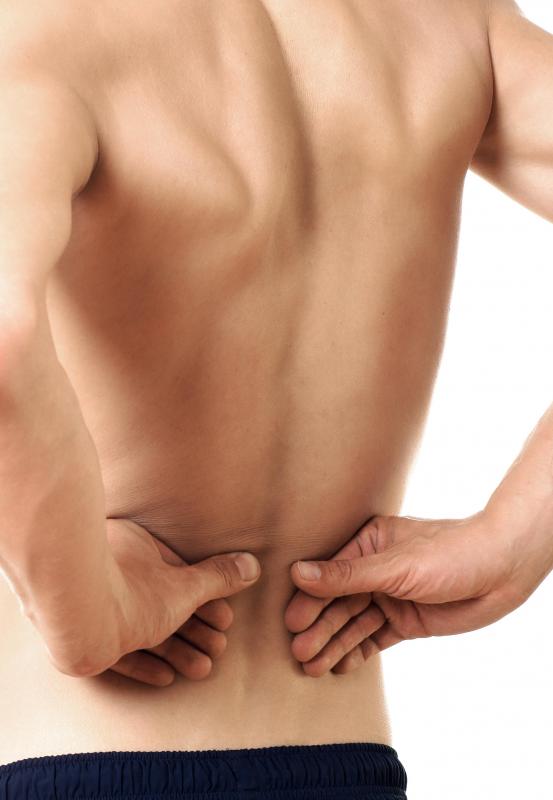At TheHealthBoard, we're committed to delivering accurate, trustworthy information. Our expert-authored content is rigorously fact-checked and sourced from credible authorities. Discover how we uphold the highest standards in providing you with reliable knowledge.
What is Lumbosacral Strain?
A lumbosacral strain is an injury to muscle tissue in the lower back. A strain usually involves one or more of the large muscles, called the paraspinal muscles, that help to support the spine while walking, twisting, bending, or lifting heavy objects. Depending on the severity of an injury, a person may have mild aches during activity or find him or herself completely unable to get out of bed. Strains and sprains in the lower region of the spine are very common, and most people who experience acute low back pain are able to recover fairly quickly with rest, home remedies, and pain medications.
Most lumbosacral strains are the result of isolated traumas to the lower back. Improper lifting techniques, such as bending from the waist instead of crouching with the legs, are common causes of a strain. A sudden, awkward fall or twist may also jar the spine and cause a muscle to stretch beyond its normal range of motion. A strain can also occur because of chronic overuse of the muscles. Weightlifters, movers, warehouse workers, and other people who bend and pick up heavy objects on a regular basis are at a higher risk of overuse injuries.

The most common symptoms of a lumbosacral strain are aches that radiate upward through the back and down the buttocks. Dull aches and pains may be constant or only noticeable when the back muscles are in use. Occasionally, the muscles can twitch or spasm and cause sudden, sharp pains. It is important to visit a doctor as soon as possible if aches become constant and unbearable or if swelling occurs in the region.

A mild lumbosacral strain can usually be treated at home. Resting for several days is the most important element of recovery to give the muscles time to heal themselves. Alternating between ice and heat packs helps to ease symptoms for many people. Over-the-counter anti-inflammatory drugs such as aspirin and ibuprofen can be beneficial as well. Once the back starts feeling better, usually in about two weeks, it is a good idea to slowly return to normal activity to avoid re-injuring the muscles.

When pain is severe, a doctor can perform a physical exam and take imaging scans to better understand the problem. He or she can check for more serious conditions such as fractures and underlying spine disorders, and treat them accordingly. If major damage is absent, the doctor usually prescribes painkillers and explains the importance of rest and home care. Surgery is usually not needed unless the muscle and surrounding tendons are completely torn. By following the doctor's instructions and taking preventive measures in the future, a person can usually make a full recovery from a lumbosacral strain.
AS FEATURED ON:
AS FEATURED ON:


















Discussion Comments
You need to get a lawyer. That was just wrong!
At age 19 while in the military, I was repeatedly kicked in the lower lumbar region of my spine. This while I was tied up to a pole and in a hyperextended position. The military said that my training did not cause or aggravate my spondylolisthesis.
I was shown to have narrowing of my l5 s1 disc and eburnation of s1. Now I have arthritis so bad I cannot work. Any comments?
A helpful topic to understand the lumbosacral srains. Is it dependent on mostly sitting jobs with men of good height and weight also?
Post your comments